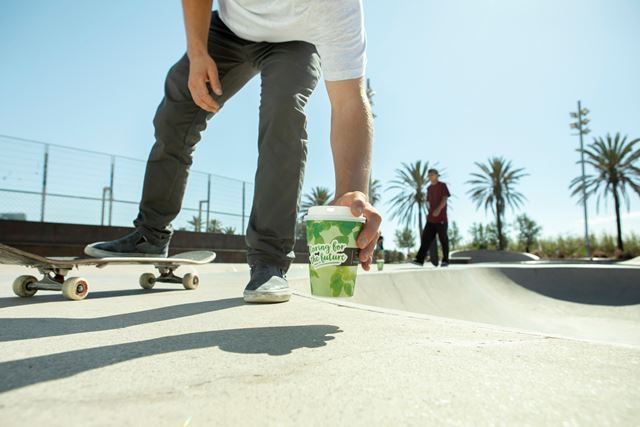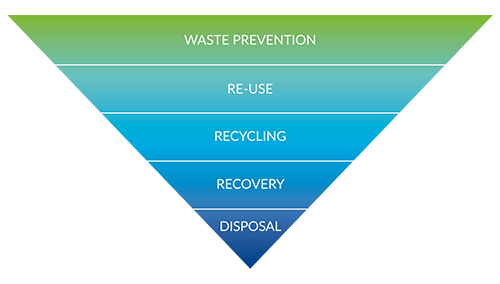
The world is becoming more circular and we pay more attention to sustainable choices everyday. One way of putting sustainable thinking into practice is reducing waste.
In many countries, mixed waste is incinerated. The process creates energy, and this can be used for heating or manufacturing new products for example. Incineration is seen as a good option for products that cannot be recycled either due to them being in the end of their recycling cycle or because there is a lack of a recycling infrastructure. However, many times we also place recyclable products into a mixed waste stream – maybe because recycling is not clearly instructed, or we think that incineration is as good as recycling.
If a product is recyclable, like for example paper cups, then recycling is always the better alternative to incineration. Why is that?
Waste hierarchy helps understand the best way to reduce waste
The waste hierarchy is a commonly used way to present waste management options according to what’s most and least favorable for the environment.

Waste prevention is the most recommended option. It means lowering the amount of waste originally produced. It can be done by smart design like using less material, efficient manufacturing operations or preventing food waste by using fit-for-purpose packaging.
The next best thing is re-using the product when considerations like food and product safety, and any resources (e.g. energy and water) to allow reuse are met. Examples of this are any products that are used multiple times, e.g. ceramic plates and cups.
If the products themselves can’t be reused, recycling should be the next option. When recycling, the materials the products are made of can be used again to create new products. The renewable fiber used to make paper cups, for example, can be used seven times before it loses its strength. Paper cups for drinks are always made of virgin fiber for food safety reasons, but the recycled material can be used for other kinds of packaging, or for example for notebooks or greeting cards.
A notch below recycling in the waste hierarchy is recovery. It means being able to use at least some of the material to produce something new, and this way recover value – for example, when some recyclable material or nutrients can be separated from the waste or when the process of incineration can produce something usable, such as electricity or heat.
When none of the above options are possible, we face disposal. This means that the materials cannot be reutilized but need to be disposed of safely. Methods, among other solutions, include landfilling, incineration, pyrolysis and gasification. Pure disposal is never ideal, but some materials just aren’t recyclable, and the waste management infrastructure is still developing.
Recycling lowers CO2 emissions significantly
So, based on the waste hierarchy, it is recommended to recycle everything that can be recycled. This way the materials get used several times in different products.
Recycling makes a major difference and has a positive impact on our planet. The end of life solution of e.g. paper cups has a major impact on their CO2 (Carbon Dioxide) emissions. A recent paper cup life cycle analysis (LCA) co-commissioned by Huhtamaki shows that recycling drives lower greenhouse gas emissions. When recycled, the carbon footprint of a regular paper cup falls by a significant 54%. When using and recycling cups made of plant-based materials, instead of traditional ones, the footprint falls by 64%. Learn more about the results of the paper cup life cycle analysis.
Huhtamaki’s Future Smart is a paper cup made from fully plant-based, 100% renewable materials. The paperboard is sourced from PEFC certified, sustainably managed forests. The inside lining of the cup is made of plant-based Polyethylene (PE) and can be recycled. According to the study, this type of a plant PE coated paper cup is the best performing paper cup option in terms of climate change impact.
At Huhtamaki, we design products with circular economy and recyclability in mind and continuously work towards a more sustainable world by paying attention to material choices, helping in building waste collection infrastructure and by guiding people in how to correctly dispose of our food packaging materials to minimize environmental impact and use of resources.
